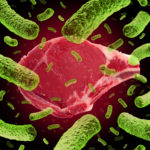By Bonnie Jenkins, Advanced Natural Wellness
Swine Flu is everywhere! If you’ve turned on your television lately, checked the Internet, or opened a newspaper, you are very aware of the current swine flu outbreak. Media outlets everywhere are flooding us with reports of this global health threat. The news is developing very rapidly, with the facts seem to change hour by hour. As I write this, the first death in America is being reported. By the time you read this, things will no doubt have changed dramatically. While I hope those changes are for the better, there is much we simply don’t know.
But here are a few things we do know: Swine flu appears to be a new and particularly virulent strain of the influenza virus, which has made the transition from animal to human hosts. It has caused the deaths of more than 175 Mexican citizens (many of them healthy young adults) since mid-April. More than 100 cases have already popped up in the U.S., prompting officials to declare a public health emergency – while Israel, New Zealand, and Spain have just confirmed the first cases to appear outside of North America.
Could this outbreak reach pandemic proportions? Very possibly … but that doesn’t mean you should start to panic yet.
Mount Your Defenses
While swine flu is impervious to current flu vaccines, it does appear to respond well to antiviral treatment. So, if you start to experience flu symptoms, it’s a good idea to see your doctor sooner rather than later, since these drugs must be started within the first 48 hours after symptoms appear. Luckily, cases in the U.S. have been noticeably milder than those in Mexico. But that could change, and medical attention could make all the difference.
That said, practicing a little extra caution could go a long way in keeping you and your family safe. And, the most important defense is a healthy immune system.
Following a healthy lifestyle is key to staying well. That means eating a diet full of antioxidant-rich fruits and veggies, exercising, getting enough sleep, and reducing stress. These last two are especially important, say researchers at the University of British Columbia. In a study conducted in 2004, 83 healthy young adults were monitored for stress before, during, and after receiving a flu shot. The researchers also looked at a battery of different things like cigarette and alcohol use, level of physical activity, and how much sleep the volunteers got. It turns out that, as unhealthy as smoking and drinking are, the two things that really undermined the participant’s immune system were stress and a lack of sleep.
Practice Good Hygiene
MD Exposes the Hidden Danger to Your Eyes

When your eyesight starts to fail, it's a real problem. Suddenly you can't go to the grocery store... you can't get to the doctor if you have an emergency... you can't meet your friends for dinner…
Your "regular" doctor doesn't have time to keep up with the latest research. And the same goes for eye doctors. They go to school to learn how to fit you for glasses and contacts, but have no way of preventing the damage and loss of eyesight that threatens your freedom and independence.
Let me show you something that explains a LOT about how your eyes work.
In my FREE Special Report, I'll show you a HUGE, untapped resource for your eyes that safely and naturally restores clear, effortless eyesight.
Click here to get started...
There is new evidence that the swine flu virus has the ability to stay viable on objects like doorknobs and money for up to 48 hours. Dodging harmful bacteria and viruses mean practicing some commonsense hygiene habits. That means washing your hands frequently with good old-fashioned soap and water, and staying home if you’re sick.
Hand-washing is a simple habit that requires only soap and warm water. Antibacterial soaps have become increasingly popular in recent years. However, these soaps are no more effective at killing germs than is regular soap. Plus, using an antibacterial soap may lead to the development of bacteria that are resistant to the products’ antimicrobial agents – making it even harder to kill these germs in the future.
While it’s true that you’ve been washing your hands all of your life, here’s a refresher course in how to do it properly.
1. Wet your hands with warm, running water and lather up with either bar or liquid soap.
2. Rub your hands vigorously together for at least 20 seconds – about the time it takes to sing one chorus of Happy Birthday.
3. Scrub all surfaces, including the backs of your hands, wrists, between your fingers, and under your fingernails.
4. Rinse well.
5. Dry your hands with a clean or disposable towel.
6. Use a towel to turn off the faucet.
Alcohol-based hand sanitizers – which don’t require water – are an excellent alternative to hand-washing, particularly when soap and water aren’t available. They are actually more effective than soap and water in killing bacteria and viruses that cause disease. Not all hand sanitizers are created equal, though. Some “waterless” hand sanitizers don’t contain the alcohol needed to kill bacteria and viruses. The Centers for Disease Control and Prevention recommends choosing products that contain at least 60 percent alcohol. To use an alcohol-based hand sanitizer, simply apply about one-half teaspoon of the product to the palm of your hand. Rub your hands together, covering all surfaces of your hands, until they are dry.
If you do feel ill, stay home! Don’t go to work, or the store, or anywhere else. If you must go to the doctor, cover your mouth and nose if you need to cough or sneeze. And keep your distance from others if at all possible.
The World's Quickest Solution for Ending Prostate and Urinary Misery
This has recently been revealed to be one of the only real breakthroughs in prostate health.
The seeds of a strange fruit (sometimes called "Chinese Apples") hold powerful phytonutrients that are a revolution in prostate health.
In fact, UCLA and Veterans Administration research have now proved this to be true.
Not only that, but it may be the worlds quickest solution for ending prostate misery.
Simply stated, these phytonutrients represent a huge step beyond beta sitosterol, saw palmetto, and other phytosterols alone.
Simply click HERE if you want to have fast prostate relief...restful, uninterrupted sleep...no more constant "urges to go"...enhanced virility...and optimal prostate support for life.
Herbal Helpers
Admittedly, no one has tested any herbs or nutrients against the swine flu virus. Scientists are busy enough fast-tracking a vaccine. But, several natural compounds have shown the ability to battle numerous strains of the flu.
At the top of the list is elderberry. This herb has been used for centuries to treat flu symptoms – and with good reason. Studies show that elderberry helps flush the virus out of the body by inducing both perspiration and bronchial secretions. And a recent randomized, double-blind, placebo-controlled study of 60 flu patients by the University of Oslo and the National Health Institute in Oslo, Norway, found that people taking elderberry extract experience relief from their symptoms four days earlier than their placebo-pumping counterparts.
But elderberry can help protect against the flu, too. A double-blind, placebo-controlled in vitro study of a proprietary black elderberry extract against 10 strains of the influenza virus by the Hadassah University Hospital in Jerusalem, Israel, found that elderberry stops the flu dead in its tracks by significantly boosting cytokine production. Cytokines are non-antibody proteins that trigger the immune response when they come in contact with a virus. And, unlike pharmaceutical flu vaccines, elderberry stimulates the production of the immune system’s T-cells and blocks viral growth, making it effective against a wide range of influenza viruses.
Another immune-boosting herb is one you may not have heard about. Andrographis, also known as Kan Jang, stimulates both specific and non-specific immune antibodies. By stimulating the body’s natural antibodies, andrographis can keep your immune system strong even if everyone around you succumbs to a viral attack. It can also help you recover considerably faster if you do come down with the flu. In two randomized clinical trials, 540 flu patients were given either andrographis or a placebo. Those taking the herb not only recovered faster, they also had significantly fewer post-flu complications.
Of course, there’s no guarantee that these traditional flu fighters will be effective against the swine flu. But, because they fortify your immune system, they may offer some degree of protection.
One Last Thing …
Common sense is critical during a health crisis like the swine flu. It can help you sort out fact from fiction. For instance, even though the swine flu has jumped from pigs to people, that doesn’t mean that the pork chop you’re planning for dinner will put you at risk. There are plenty of other reasons to avoid eating bacon, but as long as pork products are handled and cooked properly (heated to an internal temperature of 160°F), then you will kill off most bacteria and viruses, including the swine flu virus.
You may also think that your seasonal flu vaccination will protect you from this outbreak of swine flu. Not true! While the CDC says it may offer a small degree of protection, this swine flu virus is a never-before-seen combination of swine, avian, and human influenza – and that means no one is fully protected against it.
Another common misconception is that if you have any type of flu symptom, you have swine flu. That’s not necessarily true. Yes, the symptoms appear to be essentially the same as those for the typical seasonal case of the flu, and those in the U.S. who have been diagnosed with swine flu are showing mild symptoms. But it doesn’t automatically mean it’s the swine strain.
See your doctor if you have any of the following symptoms:
• A fever of 100.5 degrees or higher • Muscle aches • Cough • Sore throat • Diarrhea or vomiting (not a typical influenza symptom)
The only way to definitively diagnose swine flu is to have laboratory testing done to determine the exact subtype of the virus.
Research Brief …
It’s no secret that eating red meat on a regular basis can boost your cholesterol levels and contribute to heart disease. But now there’s another reason to trade that burger for a nice piece of chicken or fish. Eating a lot of red meat is linked to a greater likelihood of age-related macular degeneration (AMD), a leading cause of blindness.
That’s what Australian researchers found after taking the dietary histories from 6,734 middle-aged men and women. After following them for seven to 13 years, they found that those who ate red meat 10 or more times a week were 47 percent more likely to develop AMD than those who ate it less than five times a week. Eating chicken, on the other hand, actually lessened the risk.
That’s not to say you can never enjoy another steak. Just limit yourself to eating red meat no more than once a week. What to eat the other six days? Experiment with different ways to prepare skinless chicken breasts or explore the ever-expanding varieties of fish at your supermarket. Not only will your heart be happier, your vision may also last a lifetime.
References:
Barak V, et al. “The effect of Sambucol, a black elderberry-based, natural product, on the production of human cytokines: I. Inflammatory cytokines.” European Cytokine Network. 2001;12:290-296.
Chong E, et al. “Red Meat and Chicken Consumption and Its Association With Age-related Macular Degeneration.” American Journal of Epidemiology. 2009;169: 867-876.
Miller GE, et al. “Psychological stress and antibody response to influenza vaccination: when is the critical period for stress, and how does it get inside the body?” Psychosomatic Medicine. 2004;66:215-223.
Panossian A, et al. “Effect of Androgrpholide and Kan Jang – fixed combination of extract SHA-10 and extract SHE-3 – on proliferation of human lymphocytes, production of cytokines and immune activation markers in the whole blood cells culture.” Phytomedicine. 2002;9:598-605






